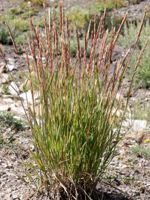Mon-Fri 9am - 5pm Mountain time
Beaked Sedge vs Slender Wheatgrass
Carex utriculata
Elymus trachycaulus
CUSTOM GROW
CUSTOM GROW
Beaked Sedge is a native perennial wetland plant that forms dense clumps of tall, grass-like stems. It produces distinctive beaked seed heads that mature from late spring into summer. The plant provides food for waterfowl, muskrats, and other wildlife, while its dense growth offers cover for birds and small mammals. Its flowers and seed structures contribute to pollinator and invertebrate habitat in aquatic ecosystems.
Thriving in saturated soils and shallow water, Beaked Sedge is common in marshes, fens, and riparian zones. Its rhizomatous growth enables it to spread into large colonies that stabilize soils and support overall wetland health. Hardy and low-maintenance once established, it is well-suited to riparian plantings, naturalization, and ecological restoration projects.
Slender Wheatgrass is a native perennial bunchgrass common across North America. It establishes quickly, making it effective for site recovery.
It produces upright seed heads that provide seasonal interest and seed for wildlife, and favoured for browsing by elk and sheep. Its seeds are eaten by birds and small mammals, and it provides cover for wildlife.
Slender Wheatgrass is among the first native grasses used for reclamation in western Canada and the U.S. It does exceptionally well in saline soils.

